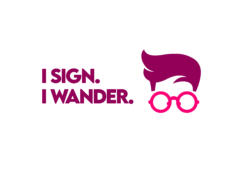It’s been a year since the switch-on of my cochlear implant. I cannot seem to find words to explain how I feel about this, but it’s been an incredible journey.
You probably have seen the video of my switch-on when I livestreamed it via Facebook. As I said before, this was to educate others on what really happens behind the scenes at the switch-on. Truth be told, I still haven’t watched the video and I don’t really want to.
Having a cochlear implant isn’t exactly roses and puppies. I’ve had good days and bad days. I always put my mental and physical wellbeing first before my cochlear implant, as mentioned in this post.

One evening after work, I was walking to the bus stop and I was struggling. My energy was really low, and I was wondering how I would be able to get to the bus stop without collapsing. I decided to take my cochlear implant off, and I suddenly got a burst of energy so I was able to get home. At that time, I was at around the 4-5 months mark – and I had learnt how much energy a cochlear implant can take from you in the first few months. I was constantly tired – that’s not the case now 😉
I’m fascinated at how there are sounds for every single thing in the world. Prior to getting a cochlear implant, I thought there were no sounds for things/actions such as getting dressed or signing. Imagine my surprise when I learnt that the hard way!

I’ve had a couple of proud moments with my cochlear implants:
- Being able to hear the chef say my order number clearly when my opportunity to lipread from afar was obstructed by a group.
- After hearing birds sing for the first time a few months after the switch-on, I’ve been able to detect birds – particularly when I’m out in the nature where the noise pollution is rather low. Hearing the birds sing is now one of my favourite moments.
- Lipreading has become easier, which means I don’t struggle as much as I did with hearing aids.
- Being able to enjoy music a lot more than I used to. I’m a massive fan of 80s and 90s music 😉

I also love wearing my cochlear implant at the cinemas because it has improved my cinema experience to a larger extent. I love being able to hear all the sound effects, which allows me the opportunity to engage with the movie more than I thought possible.
Despite the cochlear implant giving me many amazing experiences, I still struggle with recognising a lot of speech. I still have a long way to go yet, although I am not too worried. I’m able to tell the difference between mens and womens voices. Today at a seminar, I heard someone talk and I asked the interpreter if that person’s voice sounded a bit odd and they said it did. I was pretty surprised to learn that I could detect if someone’s voice sounded odd, so that’s yet another milestone. I’ve also learnt to tell the difference in tones – whether someone’s excited or angry.
Accents are fascinating. The other day I heard a man talking and I could tell he had an accent – one I hadn’t heard before, then I had a look at his body language and clothes. I thought he could be Italian, so I asked my friend if she could recognise his Italian accent and she said she could.

Speech recognition still requires a lot of work, however I am very patient with this. I did not have many opportunities for auditory verbal training as a child, so I have a lot to catch up on. If I have to be honest, I’ve been slack with this in the last couple of months. However, I intend to do more speech recognition training now that I have no more major commitments.
While I have a cochlear implant, I still use Auslan as my preferred language. I feel most comfortable communicating in Auslan. I’m also a lot more prouder of my Deaf identity. My cochlear implant is just a tool; a powerful hearing device.
I have been approved to get my left ear implanted. I was originally supposed to get the surgery done in August 2017, although I did not feel mentally and physically ready for it so I asked to be taken off the waiting list. I might get it done this year or next year when I feel ready.
Getting a cochlear implant is a life-changing decision, and it’s a decision I have no regrets making. I love my cochlear implant. I love being Deaf. I love being an Auslan user. I love being able to hear birds singing. I love hearing leaves crunching in autumn. I love music.

Here’s to the next 12 months and onwards!
x

